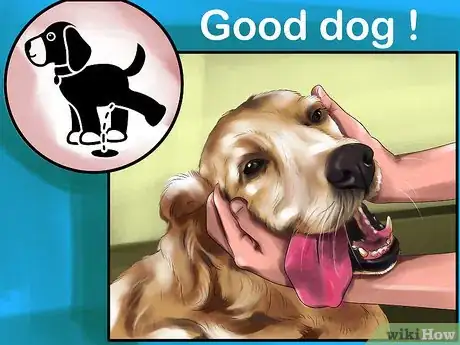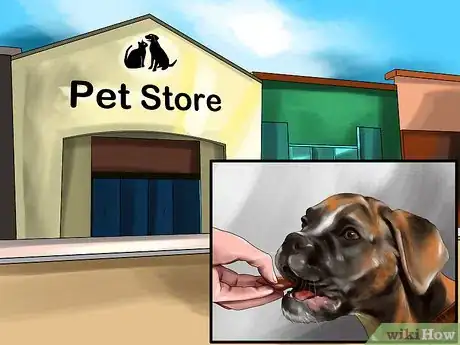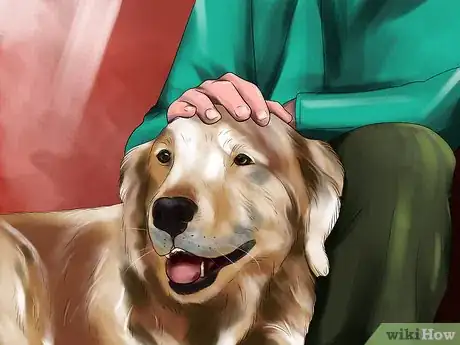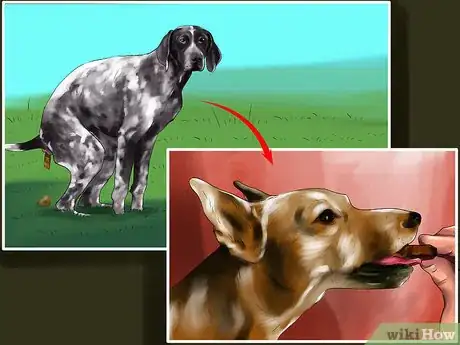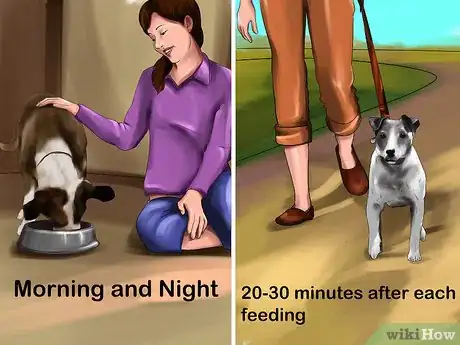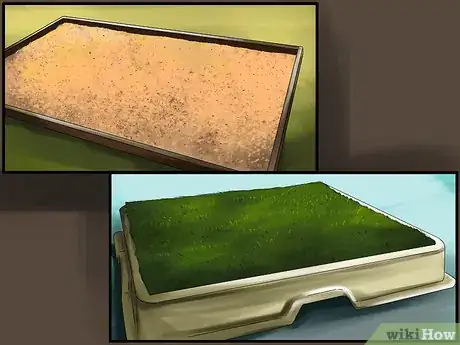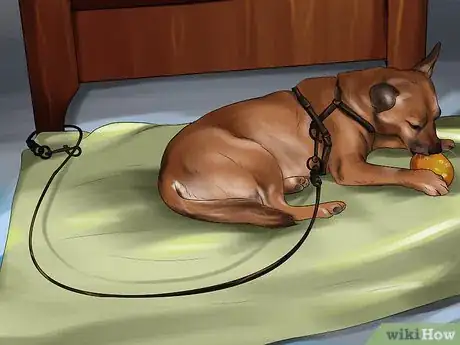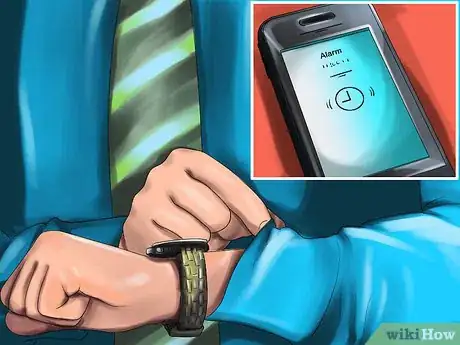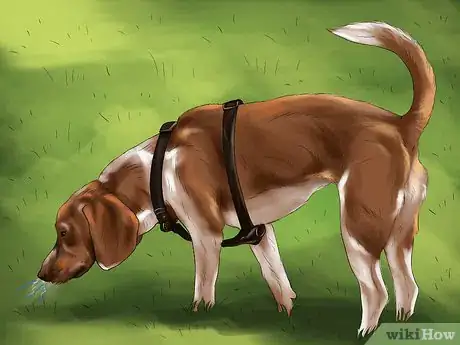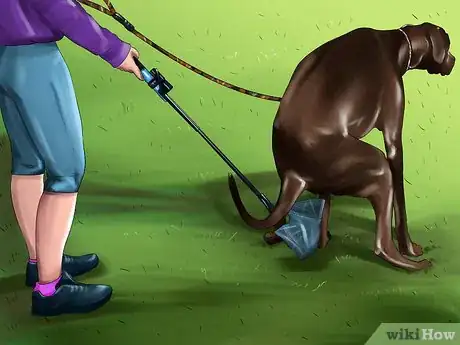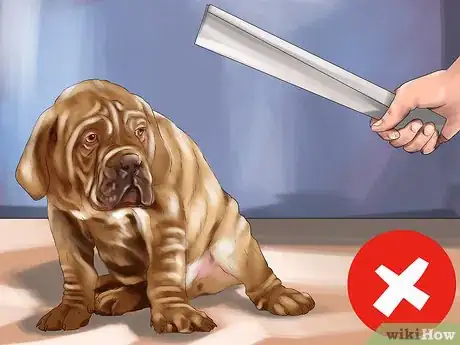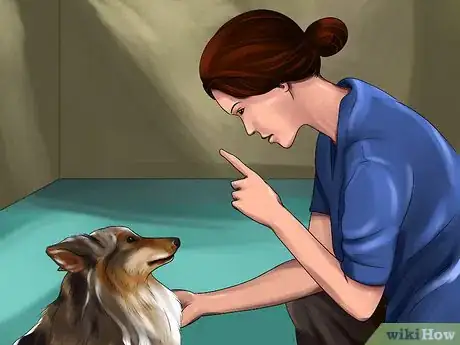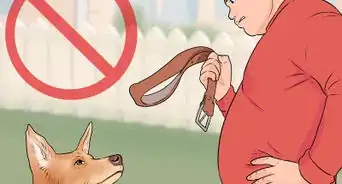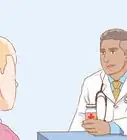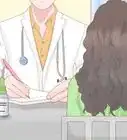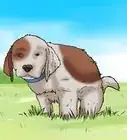This article was co-authored by Lauren Baker, DVM, PhD. Dr. Baker is a Veterinarian and PhD candidate in Comparative Biomedical Sciences. Dr. Baker received her Doctor of Veterinary Medicine from the University of Wisconsin in 2016, and went on to pursue a PhD through her work in the Comparative Orthopaedic Research Laboratory.
This article has been viewed 14,888 times.
House-training your dog or puppy is an essential element of welcoming a dog into your home. Fortunately, this can be accomplished in a gentle and humane way by focusing on positive reinforcement. By creating a good routine, rewarding good behavior, and learning how to respond to accidents, you can effectively house-train your dog. If you approach it with patience and remain consistent, this process with be simple and smooth.
Steps
Rewarding the Dog for Good Behavior
-
1Praise the dog. The key to using positive reinforcement is to provide something positive any time the dog achieves the proper behavior. Every time your dog uses the potty spot, you can praise them with kind words. It is crucial for praise to come immediately after the dog goes potty.[1] You might say:
- "Good job going potty!"
- "Good dog!"
- "Good pee!"
-
2Provide a treat. Verbal praise is often not enough, especially when you have just begun training. You should also positively reinforce good potty behavior by providing a treat any time your dog uses the potty spot correctly. Select a food-based treat that your dog enjoys and that is suitable for their size.[2] You can give your pooch small pieces of chicken breast or hot dogs.
- Alternatively, dog treats can be purchased at pet stores, grocery stores, through your vet, and online.
Advertisement -
3Touch the dog lovingly. Another way to reward your dog for appropriate potty behavior and provide positive reinforcement is to touch your dog lovingly as a form of praise. This may be especially helpful for dogs that are not very food-motivated. Make strong eye contact with your dog as your pet them or scratch them in their favorite spot.[3] You can also pat them lightly.
-
4Time the reward correctly. In order for these rewards to function properly as positive reinforcement, you must time them correctly. Keep some dog treats in your pocket when you take them outside. As soon as they have finished going potty, reward your dog with a combination of:
- Treats
- Kind words
- Physical affection
-
5Continue providing rewards. In order for your dog's appropriate potty behavior to become an ingrained habit, you have to continually reinforce it. Even after your dog appears to be fully potty-trained, continue to provide praise, loving pats, and sometimes even food treats to keep them motivated and further reinforce good behavior.
Creating a Good Routine
-
1Stick to a schedule. The first step in housetraining your dog with positive reinforcement is to create a schedule that you can stick to. This schedule should dictate when your dog eats, goes outside, and plays.[4]
- Feed your dog at the same time each morning and night.
- Take your dog outside 20-30 minutes after each feeding.
- Schedule 2-3 additional potty trips each day (older dogs can generally wait longer than puppies).
- Schedule a time for physical activity and play.
-
2Choose a "potty spot." Another important aspect of creating a solid routine involves selecting a "potty spot" for your dog. If you always bring your dog to the same specific spot at bathroom time, they will better understand this is the time to go potty, and not a time to play.[5]
- Select a specific area that is close to your house and has grass or soil (e.g., the southwest corner of the yard).
-
3Supervise your dog. While you are in the process of potty training your dog, it is crucial to supervise them at all times. If there are brief periods of time (2-3 hours max) that you cannot supervise your dog, you must confine them to a crate or one room of your house (such as the kitchen).[6] It may help for you to:
- Tether the dog to you with a leash (especially if it is a puppy).
- Enlist friends or family members to help with supervision.
Leading a Positive Potty Trip
-
1Check the time. Hopefully you will have established an eating and going potty schedule for your dog. Make it a habit of checking the clock or set reminders on your phone. When it is time to go potty, promptly take your dog out.[7]
-
2Watch for potty behaviors. In addition to sticking to your potty schedule, sometimes your dog may need an extra trip. Watch out for your dog giving signals that they need to go potty in order to prevent accidents at home.[8] Your dog might:
- Whine
- Sniff the ground
- Scratch or paw the ground
- Walk around in a circle
-
3Bring your dog to the special spot. When it is time to go potty (or if your dog is exhibiting signs) take your dog to the special "potty spot" you have chosen. Remember, this is a potty trip, not a play trip, so go directly to the spot.[9]
-
4Wait for them to go potty. Your dog may need a little time to work up the urge to go potty, but at the same time, you don't want to be waiting all day. Establish the length of time you will wait--10 to 15 minutes is a good average--and then wait with your dog.[10]
-
5Provide immediate praise. As soon as your dog goes potty in the correct spot, praise them verbally, touch them lovingly and provide a yummy treat. Then take your dog back inside.
Handling Accidents
-
1Avoid punishing the dog. Positive reinforcement does not rely on a system of punishment or fear. If your dog should have an accident, do not yell, physically harm, or otherwise punish the dog. Instead, think about why the accident may have occurred.[11]
- Perhaps the dog cannot wait as long to use the potty.
- Perhaps the dog had additional food or drink.
-
2Speak in a calm, but firm tone. If you catch the dog in the act of going potty inside, speak in a firm voice (or make a loud noise) that interrupts the action, and take the dog outside immediately.[12]
- You might say, "Outside!"
- You could also clap your hands or make another loud noise.
-
3Clean the area thoroughly. If your dog should have an accident on the floor, it is crucial to clean this area thoroughly. Any remaining scent could encourage your dog to go potty in the same location again.[13]
- Clean the area with hot water and detergent.
- Follow with an enzyme-based cleaner created specifically for pet accidents (available at pet stores and online).
References
- ↑ https://www.cesarsway.com/dog-training/housebreaking-issues/housebreaking
- ↑ https://www.cesarsway.com/dog-training/housebreaking-issues/housebreaking
- ↑ http://www.humanesociety.org/animals/dogs/tips/housetraining_puppies.html
- ↑ https://www.cesarsway.com/dog-training/housebreaking-issues/housebreaking
- ↑ http://www.humanesociety.org/animals/dogs/tips/housetraining_puppies.html
- ↑ http://www.humanesociety.org/animals/dogs/tips/housetraining_puppies.html
- ↑ http://www.humanesociety.org/animals/dogs/tips/housetraining_puppies.html
- ↑ http://www.aspca.org/news/house-training-your-dog-or-puppy
- ↑ http://www.humanesociety.org/animals/dogs/tips/housetraining_puppies.html
- ↑ http://www.humanesociety.org/animals/dogs/tips/housetraining_puppies.html
- ↑ http://www.humanesociety.org/animals/dogs/tips/housetraining_puppies.html
- ↑ http://www.humanesociety.org/animals/dogs/tips/housetraining_puppies.html
- ↑ http://www.humanesociety.org/animals/dogs/tips/housetraining_puppies.html
About This Article
The best way to housebreak your dog is to bring it to the same area outside every time, then give it positive reinforcement when it uses the bathroom. Plan to take your dog to its spot about 20 minutes after you feed it, every time you feed it, so you can create a routine. In addition to these regular trips outside after meals, you may need to take your dog on an extra potty trip if it's sniffing or scratching at the ground or walking around in a circle. As soon as your dog uses its potty spot correctly, praise it with phrases like ”Good dog!” and give it a treat. You can also pet it or give it a good scratch as another reward. For more tips from our Veterinary co-author, including what to do if your dog has an accident, read on!
